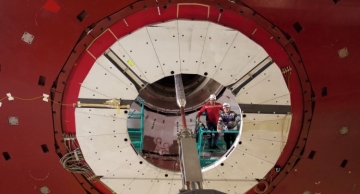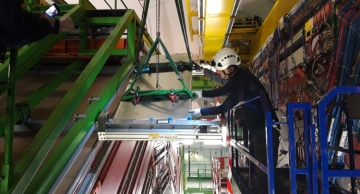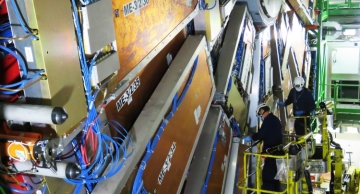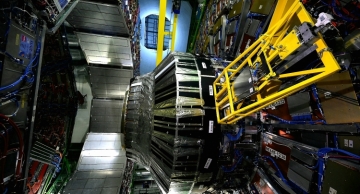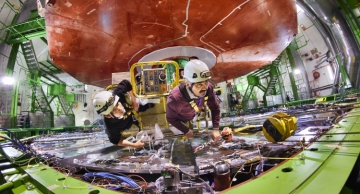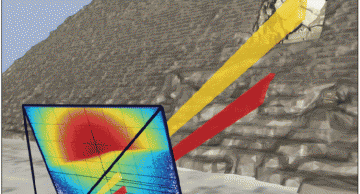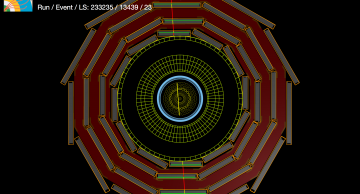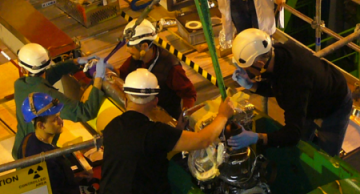The first of the improved Resistive Plate Chambers for Hi-Lumi CMS were installed in record time during the LHC winter break.
The RPC Hi-Lumi CMS Project reached an important milestone at the start of 2025 by delivering the first half of its final…
CMS has just finished wrapping the barrel with a new layer which is not a new detector but a brand new protection system aimed to keep the outer barrel muon chambers shielded from background radiation present in the experimental cavern during…
Despite the rather challenging circumstances of the COVID-19 pandemic, the CMS GEM (Gas Electron Multiplier) team has been working against all odds to complete the installation of the very first GEM station (GE1/1) in CMS. With the completion of one…
Since late May, with the incremental re-opening of CERN’s facilities, members of the CMS GEM project have been hard at work restarting the laboratory activities in preparation for the continued efforts towards the GE1/1 chambers installation. Made…
The Compact Muon Solenoid (CMS) Muon System is undergoing major upgrades during Long Shutdown 2 (LS2), preparing for the High Luminosity LHC (HL-LHC). The Large Hadron Collider will be upgraded to significantly increase the luminosity (frequency of…
The CMS Gas Electron Multiplier (GEM) subsystem will form an extra layer of detectors, along with the Cathode Strip Chambers (CSC) layers, closest to the beam. The GEM's ability to cope with a very high particle rate will greatly improve…
After the LHC was shut down in December 2018 following the successful completion of RUN 2 operation, CMS is undergoing an intensive upgrade and maintenance program during the current two-year break (“Long Shutdown 2” or LS2) in order to ensure an…
Suppose that you need to see what is inside a small room that is difficult to access. Thick walls between you and the object of your investigation; you cannot dig, and the closest that you can get to the target is inside a narrow tunnel, with no…
CMS is eager to see the first collisions of the LHC Run2. The recent news that the LHC restart may be delayed because of a hardware issue gives us extra time to prepare for those collisions. Far from being idle waiting for collisions, CMS is busy…
The Year-End Technical Stop or YETS, when the LHC takes its annual break, seemed like a quiet time to those outside CERN. After all, there were no collisions taking place and the CMS detector was not operating 24-hours-a-day, seven-days-a-week.…

